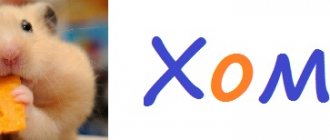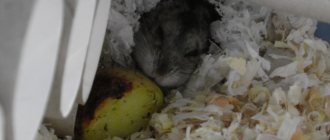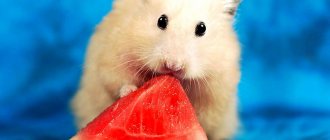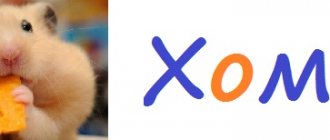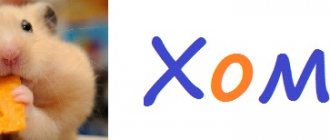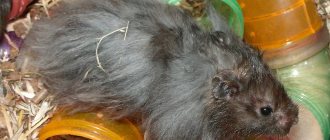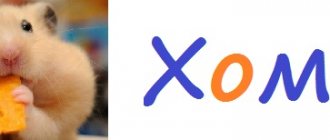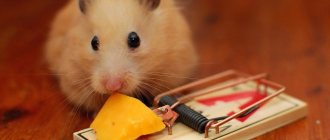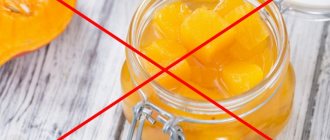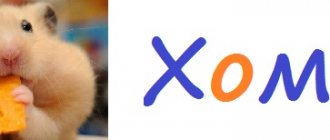Hamsters have a different digestive system than humans, and therefore most foods consumed by humans are not suitable for the delicate gastrointestinal tract of a domestic rodent. Some inexperienced hamster breeders feed their pets vegetables and fruits from the prohibited list, and then look for answers to the question of why the hamster died. To avoid having to look for an answer, you need to carefully monitor your hamster’s diet and include in its diet, in addition to grain food, various vegetables and fruits. One piece of an inappropriate or spoiled vegetable or fruit will be enough for a rodent to start having problems with the digestive system, and systematic feeding of such products is fatal. Today we will talk about a fairly common vegetable in our region and find out whether hamsters can have beets, boiled or raw.
Is it possible to feed hamsters boiled vegetables?
It is advisable to treat your pets to raw plant foods containing many useful substances. Rodents enjoy eating not only fresh beets, but also zucchini, cucumbers, pumpkin, turnips, asparagus, squash, and sweet peppers. Some vegetables can be boiled if desired, but always without salt. Salty food causes great harm to the hamsters' body. Animals love to treat themselves to boiled beets, as well as pumpkin and carrots. But you don’t need to cook vegetables for a long time, otherwise not a trace of their beneficial properties will remain.
The benefits and harms of beets for a hamster
The vegetable contains many benefits. It will improve your pet’s digestion and improve its microflora balance. But it is worth remembering that you should not give too many treats to your hamster, as beets are weakening and their excessive consumption can cause diarrhea.
- Try to avoid low-quality products in your food.
- If your pet begins to feel unwell and is inactive, then seek help from a veterinarian. Perhaps he has an allergy to the root vegetable.
- The bowl should be washed after each meal of the animal.
- Uneaten remains of beets and other natural treats should be thrown away immediately if the pet no longer touches them. A spoiled product is also dangerous for the hamster.
Which beets are best to give?
The root vegetable retains its beneficial properties even with heat treatment, and can also be stored for a long time, which is very good in winter, when choosing quality fruits and vegetables can be difficult. But what is best for hamsters? Let's figure it out.
Raw beets
If this is not possible, then buy the product from trusted people who grow with natural fertilizers without any chemicals. Remember that after eating something of poor quality once, the hamster may die.
Boiled beets
Hamsters can also use it in this form. But it is worth considering the peculiarities of preparation.
- Before serving, wash the vegetable well.
- Cook for a short time so that it does not lose its beneficial properties.
- You cannot add salt to the water or add spices and spices. It seems to us that it will taste better this way, but it will only make things worse for the baby.
- The peel must be cut off.
- The slice should not exceed 1 cm in size.
- You should not give this treat too often. Several times a week will be enough.
What precautions should you take?
The owner must make sure that the beets that he puts in the hamster feeder are not spoiled or rotten. It is advisable to treat your pet to root vegetables grown on your own plot without the use of pesticides. Vegetables sold in stores are usually treated with chemicals that are harmful to small rodents. You should also not give your pet treats grown near industrial zones and highways. Before putting the root crop in the feeder, you need to wash it thoroughly.
How to feed hamsters
Is it possible to give a hamster beets? How often to do this is decided by each individual. Some believe that this vegetable is necessary to provide the small body with fluid. Others argue that consumption only leads to digestive disorders. Infrequent complementary feeding is allowed, and it is safe to say that if the vegetable is clean and free of mold, it can be consumed in small quantities. But don’t forget about many other healthy foods and special foods. Then your pet will be cheerful and healthy.
Other vegetables
Don't forget to supplement your pet's diet with other healthy vegetables. They will not be among the basic ones, but if consumed 1-2 times a week they will bring tangible benefits to his body.
Eggplant
Recommended for fresh consumption, it is usually alternated with other vegetables, offering the hamster no more than 50 grams at a time. When purchasing, avoid overripe fruits - eggplants are useful because they restore the water-mineral balance in the animal’s body; unripe and stale fruits are not suitable for this.
Pumpkin
Contains a lot of fiber, beta-carotene, good for the eyes, phosphorus, iron, potassium. Useful as a treat even for overweight animals and diabetics. But, unlike carrots, it is not suitable as a daily food.
Pumpkin should diversify the diet, and not become its basis; it is useful in fresh, stewed, boiled form. Be sure to have no peel - cut it off in a thick layer.
When baking, pumpkin should not be seasoned with oil, spices or salt. This puts a lot of strain on the liver of a rodent, which in nature does not eat such things.
Zucchini
Zucchini cannot be the basis of the daily diet - veterinarians advise alternating it with other juicy vegetables: cucumbers, eggplants, pumpkin.
Can hamsters eat beets?
The nutrition of domestic rodents must be of high quality and balanced, because the health of small pets depends on it. It is enough to put an inappropriate or spoiled product into the feeder just once to cause serious harm to the animal’s body. Many inexperienced owners are concerned about the question of whether a hamster can eat vegetables. Beets are a vitamin-rich and highly nutritious root vegetable. But is it beneficial or harmful for a tiny animal?
Can hamsters have boiled beets?
Boiled vegetables are also suitable for your baby, but there are a number of conditions:
- You need to boil the beets very briefly so that they do not lose their nutritional value;
- it is strictly forbidden to add salt or any spices to the water;
- the frequency of treats should not exceed several times a month;
- a slice of boiled root vegetable should not exceed the size of a treat made from raw beets.
It must be remembered that one treat replaces another. That is, within a month you can offer your hamster 1 raw and 2 boiled slices. Djungarian hamsters should be offered beets in even smaller quantities.
Is it possible to treat rodents with fresh vegetables?
The animals' diet must include fresh plant foods. Rodents get not only vitamins and microelements from vegetables, but also liquid. It is allowed to give beets to hamsters, but in limited quantities. During the day, an adult pet can be treated to a piece of root vegetable no larger than a button. It is not recommended to give more, since beets are among the foods that relax the intestines. If your pet chews too much of a vegetable, it will develop diarrhea. And disruption of the digestive tract is difficult for small animals to tolerate.
Can hamsters eat raw beets?
The debate as to whether beets are allowed for hamsters has been going on for a long time. It is a controversial product, and some owners claim that this vegetable is healthy and necessary for pets to provide the required amount of fluid. Adherents of a different point of view believe that the root vegetable, at best, does not provide any benefit, and at worst, it has a negative effect on the animal’s body.
If you still really want to please your pet and give your Djungarian or Syrian hamster beets, then you can treat them 2-3 times a month, and the slice should not be larger than your thumbnail. Higher frequency may provoke the development of an allergic reaction or cause diarrhea. Small rodents are extremely difficult to tolerate any digestive disorders.
Possible negative consequences
If an animal has eaten beets and has a food allergy, the following reactions are possible:
- eye inflammation, lacrimation;
- sneezing, coughing and nasal discharge;
- impaired breathing;
- diarrhea, vomiting;
- the appearance of an itchy rash;
- dizziness.
Reference! The very first thing to do in case of food poisoning is to contact a veterinary clinic. Be sure to avoid further consumption of the allergen. If the symptoms are very strong, then before the doctor arrives, you can give the animal activated charcoal.
Is it possible to give hamsters boiled and raw beets?
Experienced rodent owners include various vegetables in their menu, but beginners are often at a loss: can hamsters have boiled and raw beets, what is the situation with carrots and bell peppers, are potatoes or cabbage acceptable. The list of products that you can treat your pet to is large, and it is not always possible to find the necessary information in a large list.
bell pepper
Bought during the season from summer residents or picked from your garden, it is useful for hamsters. The product contains more vitamin C than black currants, and it contains more retinol than carrots. It strengthens the animal’s immunity, vision, heart, bones, and is rich in zinc, potassium and calcium.
Ground dried paprika (spice) or hot capsicum should not be given to pets.
What to give him to drink
The hamster should be given water with settled, unboiled water. The ideal drinking bowl is one with a ball at the end of the tube: the hamster moves the ball with its tongue and drinks the water flowing out of the tube. Open drinking bowls are not clean for more than five minutes, so it is best to avoid them.
Let's talk about such a component of a pet's diet as vegetables. It is a misconception to believe that a hamster can do anything - his digestive tract does not digest a number of vegetable crops well, and some are deadly to him. Let's look into the details: what is useful for the animal and what is not.
- Root vegetables (potatoes, beets, carrots)
- Potato
- Beet
- Carrot
- Radish
- Turnip
- Cucumbers and tomatoes
- Cucumber
- Tomatoes and cherry tomatoes
- bell pepper
- Cabbage and its varieties
- Other vegetables
- Eggplant
- Pumpkin
- Zucchini
- Finally
Vegetables in a hamster's diet
Let's talk about such a component of a pet's diet as vegetables. It is a misconception to believe that a hamster can do anything - his digestive tract does not digest a number of vegetable crops well, and some are deadly to him. Let's look into the details: what is useful for the animal and what is not.
Content
Cucumbers and tomatoes
Both vegetables are beneficial for hamsters, but there are nuances to their introduction into the diet.
Cucumber
Allowed fresh 1 time per day, daily intake - up to 50 grams. Store-bought cucumbers are peeled and pre-soaked. Give it to young animals up to 2 months with caution, observing the reaction of the still immature gastrointestinal tract.
Tomatoes and cherry tomatoes
Tomatoes are useful for digestion, respiratory function, cleansing blood vessels and capillaries. They protect the hamster from cancer due to the content of lycopene and antioxidants. Strengthen nerve fibers and have a beneficial effect on the hematopoietic organs. They contain a lot of iodine for the thyroid gland and magnesium for the heart. They are given fresh without peel 1-2 times a week; preference is given to tomatoes from your own plot, grown without the use of chemicals.
In Syrian hamsters, tomatoes can provoke or aggravate arthritis; it is better not to give these rodents tomatoes.
Boiled beets
Eating boiled beets is beneficial. Even when cooked, the vegetable retains all vitamins and beneficial microelements. The root vegetable contains:
- folic acid;
- cellulose;
- iodine;
- potassium;
- iron.
Helps improve the functioning of the gastrointestinal tract and has a laxative effect. If it has not been boiled for long, it is allowed to treat rodents with it. The main thing is to boil without salt for a short time. It is prohibited to use any spices. It is necessary to diversify the daily menu.
Can hamsters eat beets?
The root vegetable contains many useful microelements. Feed rodents with caution. Try giving your baby a tiny piece of this vegetable and see his reaction. If everything is fine with his stool, you can give him a larger piece.
Which variety is best to give?
There are different types:
- Stern;
- Dining room;
- Sugar.
Most often we can find table beets because we often eat them ourselves. This vegetable can be given to your pet; it contains more beneficial microelements than other varieties.
Sugar beets can also be included in the diet, but be careful not to cause diabetes.
What should you avoid?
When treating your little friend to an apple, you should not forget that it contains seeds containing a certain percentage of a strong poison - hydrocyanic acid. The apple must be cut, the core removed and given in small pieces.
If the apples are “homemade”, they can be given with the peel. Store-bought ones, especially imported ones, need to be cleaned
, since they are treated with wax and other solutions to preserve their presentation.
Did you give the baby a few pieces? Make sure that they do not remain in his cage “for later.” Cut apples quickly deteriorate and begin to rot, at the same time “contaminating” the rest of the food, and the rodent can simply become poisoned.
If you are used to storing apples in the refrigerator, do not give them to your pets as soon as you take them out. Warm it under hot water or let it sit in the room for a while
, because cold food is also bad for hamsters.
Can hamsters eat beets?
Beetroot as complementary food for rodents. Its beneficial qualities, quantity and frequency with which you can feed hamsters. Which is better to give for dzhungariki, boiled or raw.
The hamster is an omnivorous rodent, but its gastrointestinal tract is structured differently than that of humans. Many of the foods in the human diet may be unsuitable for him and cause harm. One spoiled piece is enough for the hamster to have digestive problems, which leads to diarrhea and other disorders. This is a fairly common vegetable, rich in vitamins, which are perfectly preserved in winter. But we need to figure out whether hamsters can eat beets.
What vegetables can you give your hamster?
All vegetables are best fed to the hamster raw. Any heat treatment significantly reduces the amount of nutrients and vitamins. It is also preferable to give your hamster vegetables that are grown in the garden.
What vegetables can a hamster eat:
- Carrot;
- Cucumber;
- Tomato;
- Zucchini;
- Pumpkin;
- Bell pepper;
- Beet;
- Turnip;
- Radish;
- Celery;
- Cauliflower;
- Chinese cabbage;
- Broccoli;
- Eggplant.
Some vegetables need to be given to your hamster daily: carrots, cucumber, bell pepper, zucchini, pumpkin. It is recommended to feed other vegetables 1-2 times a week: tomato, cauliflower, turnip, radish.
Hamsters are very active rodents that are nocturnal. There are several opinions about the best time to give your hamster vegetables. Some are of the opinion that vegetables should be fed in the first half of the day, others advise feeding them in the late afternoon, when the rodent’s activity increases.
You can determine at what time to give vegetables to your hamster experimentally. You can try giving it first during the day and then in the evening and observe his behavior. At one time he may refuse food, and at another time he will gladly try the offered treat. You can also create a combined diet. During the day, feed light vegetables and fruits, and in the evening, when the rodent’s activity increases, vegetables and a grain mixture.
The diet and daily food intake depend not only on the type of hamster, but also on individual characteristics. But you shouldn’t follow your pet’s lead and feed him only the food he chooses on his own. The rodent's body must receive all the necessary nutrients and vitamins that are needed for development and full functioning.
Let's figure out what benefits each vegetable brings separately.
Carrot
Contains vitamins A, C, E, carotene, potassium. Strengthens the immune system, cardiovascular system, improves digestion, and is good for skin and coat.
It is recommended to feed your hamster carrots daily. It can be given both raw and boiled. First, the carrots must be washed and cut into small pieces.
Cucumber
Contains vitamin B, due to which it affects the nervous system and increases stress resistance. Also contains a large amount of water. Very useful for hamsters with obesity.
Feed fresh cucumber once a day. The vegetable can be cut into small pieces or grated.
Tomato
Useful for the hamster's gastrointestinal tract, improves digestion, cleanses blood vessels. Feed fresh to the hamster 1-2 times a week.
bell pepper
Contains a large amount of vitamin C, calcium, zinc, potassium, retinol. Strengthens the immune system, improves vision, is good for the heart, strengthens bone tissue.
Pumpkin
Contains a large amount of vitamins and fiber. Pumpkin contains beta-carotene, iron, phosphorus, and potassium. Improves vision, normalizes the functioning of the digestive system. Particularly useful for overweight hamsters and individuals susceptible to diabetes.
Feed pumpkin fresh without peel. It is very useful to give your hamster pumpkin seeds.
Zucchini
It is also useful to feed to hamsters predisposed to developing diabetes and obese hamsters. It is considered a dietary vegetable.
You can feed it fresh, after cutting it into pieces or grating it. You can also make puree from zucchini. Zucchini seeds are useful to give to hamsters against helminths.
Radish
Contains folic acid, calcium, phosphorus, magnesium. Cleanses the liver, removes toxins, and is especially useful for pregnant women. Feed 1-2 times a week.
Contains a lot of calcium. Strengthens bones, teeth, and is good for joints.
Hamsters can only be given table beets. Sugar beets lead to the development of diabetes. Fodder beets are practically useless for a hamster. Feed raw or cooked. Raw beets can only be given to a rodent without the peel.
What vegetables should a hamster not eat?
Vegetables prohibited for a hamster include:
- Potato. Contains a large amount of starch. A small piece may not do anything to the hamster, it all depends on the individual characteristics of the pet. But it is not recommended to feed potatoes on a regular basis.
- Cabbage. Only white and red cabbage are considered prohibited. Causes fermentation in the intestines, gas formation, and bloating.
- Peas. Just like cabbage, it causes fermentation and bloating.
- Onion. Very spicy.
- Garlic. Even a small piece is poisonous to the rodent's body.
- Canned vegetables. When preserving, vinegar, salt and various seasonings are used, which are very dangerous for the hamster.
It is worth noting that vegetables are perishable foods. Therefore, after feeding the hamster, the remains should be removed. You should also check and clean out your rodent's pantry. To prevent the hamster from being upset that his supplies have been ruined, you must leave him a treat that does not spoil.
Vegetables are an integral part of a hamster's diet. To keep your pet active and healthy, you need to monitor its diet. Also, do not overfeed the rodent. Excess weight increases the load on internal organs and reduces the lifespan of a hamster.
Composition and properties
Beetroot is a very popular vegetable in our country because it does not lose the vitamins and minerals it contains during storage. This is very important in the winter season, when there is not much choice of fresh vegetables and fruits.
This vegetable contains:
- folic acid,
- cellulose,
- vitamins of group B, P, PP,
- magnesium,
- iodine,
- potassium,
- iron,
- as well as other micro- and macroelements and amino acids.
Fiber, contained in large quantities in beets, improves the functioning of the digestive system and helps cleanse the intestines of the accumulation of waste and toxins. For chronic constipation, it is necessary to consume this vegetable, because boiled beets make you weak.
Boiled beets are also very useful, because during heat treatment the substances that make up the vegetable are not destroyed. Therefore, it is just as beneficial for the body as raw.
Whether it is possible to feed a hamster beets is a controversial issue. Some rodent owners claim that this healthy vegetable is necessary to diversify the rodent's diet. Others believe that eating beets for a hamster will not bring any benefit, but, on the contrary, will lead to digestive problems.
As always, both sides are right. Beets can be given to hamsters in very small quantities and not often in order to diversify the rodent’s diet. Offer a tiny piece to your pet and see his reaction. If everything is fine with your pet and his stool has not changed, then next time try giving him a larger piece. But the piece should be no larger than your thumbnail and you only need to offer beets a few times a month. It is not recommended to feed it more and more often, since consuming a large amount of this root vegetable will cause the hamster to develop diarrhea. And any disruption of the gastrointestinal tract is very difficult for small pets to tolerate.
Cabbage and its varieties
Syrian hamsters are prohibited from introducing it into their diet - the structural features of the gastrointestinal tract do not allow them to digest cabbage fiber.
Djungarian and Roborovsky hamsters can be offered the following types during the season (from August to November) 2-3 times a week, 50 grams each:
- colored (fresh, boiled);
- Beijing (fresh);
- broccoli (fresh).
You can read more about the formation of the diet of Djungarians and Syrians in separate articles.
It is not recommended for hamsters to include white cabbage in the menu - it causes fermentation in the intestines. And red-headed varieties are strictly prohibited - they can be fatal due to bloating.
Suitable Products
A pet hamster can be fed only natural products. This is not the case when any food from our table can become complete nutrition for a pet. The digestion of rodents is quite delicate, and if you feed them the wrong foods, the animal can get sick.
Nuts and grains
A hamster needs solid food to wear down its teeth, which grow throughout its life. To make your diet as varied as possible, you can purchase special food at any veterinary store, including the usual cereals and whole grains, or make a mix at home, the list of which includes:
- Rice;
- Buckwheat;
- Wheat grains;
- Cereals;
- Pearl barley;
- Corn grains.
It is advisable to give your hamster seeds (sunflower and pumpkin, most importantly not fried) and nuts. Walnuts must first be cracked - the hamster himself cannot cope with this task, but hazelnuts must be given whole. The hamster himself will gnaw a hole in it and take out the kernel: he will eat and sharpen his teeth.
Angora and Syrian hamsters are more unpretentious in food - food for large rodents is also suitable for them, but large grains and whole nuts are much more difficult to chew for dwarf hamsters. To grind down the teeth, give them crushed cereal and solid calcium in the form of a pebble, which you can buy at a veterinary store or pharmacy.
The following products should not be given to your hamster:
- Bread, crackers, cookies, pastries;
- Almonds and Brazil nuts;
- Seeds from fruits and berries.
Vegetables, fruits and berries
Hamsters need juicy food for proper digestion, so their diet should include fresh vegetables and fruits. These include:
- Potatoes, carrots, beets, sweet peppers, cucumbers, zucchini, tomatoes, pumpkin;
- Apples, pears, peaches, apricots, plums, quinces, melons;
- Strawberries, raspberries, blueberries, currants, blackberries.
As for vegetables, hamsters should not be fed cabbage - this can cause digestive problems, and any exotic berries and fruits are undesirable.
Protein food
Hamsters can also be fed fish, meat, hard-boiled eggs, and fermented milk products, but the food should not be, firstly, raw, and secondly, fatty. Protein food should be given to your hamster no more than twice a week. Fresh milk should not be given.
Vegetables for a hamster, what vegetables can a hamster eat?
Hamster
The basis of the hamster's diet is grain mixtures. Some of them may contain pieces of dried vegetables and fruits, but this is not enough. It is best to use natural products. For full development, it is necessary to include plant foods in the form of fresh vegetables and fruits in the hamster’s daily diet. But not all vegetables are equally beneficial for a hamster. In order not to harm your pet, you should know which vegetables can be given to your hamster and which are prohibited.
Content
Root vegetables (potatoes, beets, carrots)
Some of them are necessary for the animal every day, others only occasionally. It is also important in what form the rodent receives this or that vegetable. The basic principle is the same as in human nutrition: the less heat treatment a product is subjected to, the more useful substances are preserved in it.
Potato
Veterinarians clearly agree that the vegetable is not recommended for a hamster due to its high starch content. You can occasionally pamper your pet with it in small quantities - it is acceptable to offer him raw or boiled potatoes, but not fried ones.
Only young potatoes (not green) without pesticides and nitrates are useful for the animal.
Beet
This vegetable is not recommended, but it is occasionally given fresh or boiled to Syrian hamsters. The cube should be no larger than a button, and they start with even smaller sizes in order to track the reaction of the gastrointestinal tract. If tolerance is normal, the portion is increased.
Keep in mind that there are three types of beets - fodder, table and sugar; hamsters are given the second option. The first contains practically no useful substances for the rodent, and the third can lead to diabetes mellitus, especially in Djungarians.
Carrot
It is not only possible, but must be given to the hamster; it is an essential ingredient in the daily diet. A mug 1.5 cm thick is enough for one approach - no more is needed, otherwise the rodent will start making supplies that will quickly spoil.
The best option is to treat the hamster with raw carrots; sometimes it is permissible to diversify the menu with boiled carrots. In addition to vitamins A, C, K, it is rich in dietary fiber, which is beneficial for digestion, and potassium for the heart muscle.
It is recommended to pre-soak all store-bought vegetables in water, this helps remove nitrates and other chemicals from them. Hamsters are sensitive to them, and due to their small size they can be poisoned by even a small portion of vegetables that have absorbed harmful substances.
Sometimes you can put 1 tablespoon of carrot tops in the animal’s bowl - they contain 5 times more vitamins than the root vegetable. But not from a store-bought vegetable - its above-ground parts are often treated with pesticides against pests, which is fatal to the rodent. If it is not possible to treat your pet to greens from your dacha, it is better to buy parsley, celery or lettuce at the supermarket - they are safer for your pet.
Radish
Recommended in small portions 1-2 times a week. Give preference to country vegetables or vegetables grown in your own beds. They contain folic acid, which is especially important for pregnant females; they effectively cleanse the liver and normalize the flow of bile. Pectin cleanses the body of toxins, and its low calorie content makes radishes a dietary product.
The root vegetable is useful in all respects, especially for Syrians prone to arthritis - turnips contain substances that protect joints from inflammation. Helps with osteoporosis, serves as a source of potassium and calcium for bones.
How to properly give beets to a hamster: recommendations
To prevent treats from harming your small pet, you need to follow several rules:
- check the root vegetable: it must be completely fresh without traces of rot or mold;
- choose vegetables only from your own garden or purchased from trusted sellers who grow them without growth stimulants and chemical fertilizers;
- Do not, under any circumstances, allow your pet to eat root vegetables if the garden is located near highways or industrial enterprises;
- after the first treat, observe and make sure that the beets have not caused an allergy and that the animal’s stool is normal.
Such advice from experienced hamster owners is very easy to follow, but will protect the health of the rodent. It is necessary to diversify your pet’s diet, but it is better to give Syrians and Djungarians beets a little at a time, giving preference to products that are definitely useful and necessary for the body. Then the baby will happily jump around the cage, vigorous and cheerful.
Finally
In order to watch the fun games of an active and charming animal, and not the recovery of a sick pet, it is important to create a balanced nutrition plan for it. Now you know how to properly introduce vegetables into your diet, which ones are healthy, and which ones you should avoid.
Vitaly / author of the article
Animal lovers are a special breed of people with a noble soul, empathic, perhaps a little prone to sentimentality, but with a pure and sympathetic heart.
Features of feeding different breeds
They are prone to diabetes, so sugar beets are contraindicated both raw and boiled. The baby can easily eat other varieties of this vegetable, however, the portion of the root vegetable should not be larger than the nail on the little finger. Just like other hamsters, dwarf hamsters should not be given this treat often. 1-2 times a week will be enough.
If you have your own garden, you can even please your pet with beet tops. You need to wash it well first so that there is no dirt left on it. However, caution must be exercised here as it is unknown how the hamster’s body will react to this. Give some tops and watch. If the pet likes it and everything is in order with health, then you can safely feed the tops as a variety of diet.
Pregnant hamsters should be given beets once a week, no more. It is better to exclude the sugar variety, because it can adversely affect the development of the fetus.
Raw beets
If you decide to try giving raw beets, you need to choose only good, fresh root vegetables without rot. The vegetable must be thoroughly washed, all damage and the peel must be cut off. Ideally, if the raw vegetable is grown in your own garden or purchased from trusted people. It is advisable to know for sure that no chemicals were used. After all, if you put a low-quality product into the feeder just once, the consequences can be unpredictable, even leading to the death of the animal.
If your hamster is trying complementary foods for the first time, you should start with a small piece and observe. Only after making sure there is no allergy and normal stool can you give more. Do not leave residue in the cage. It's better to throw them away right away. It is advisable to pamper rodents with it no more than once a week.
Features of feeding different breeds
Djungarian and Roborovsky hamsters are small. Accordingly, their feeding will be different: portions are smaller than for larger breeds, caution increases. The body of dwarf hamsters is even weaker than that of larger hamsters.
They are prone to diabetes, so sugar beets are contraindicated both raw and boiled. The baby can easily eat other varieties of this vegetable, however, the portion of the root vegetable should not be larger than the nail on the little finger. Just like other hamsters, dwarf hamsters should not be given this treat often. 1-2 times a week will be enough.
Syrian hamsters are larger in size. Not much, but still. These rodents can be given any variety of beets. But don't forget that everything is good in moderation. It is very important not to overfeed your hamster with beets - they have a laxative effect, which can cause diarrhea.
If you have your own garden, you can even please your pet with beet tops. You need to wash it well first so that there is no dirt left on it. However, caution must be exercised here as it is unknown how the hamster’s body will react to this. Give some tops and watch. If the pet likes it and everything is in order with health, then you can safely feed the tops as a variety of diet.
Pregnant hamsters should be given beets once a week, no more. It is better to exclude the sugar variety, because it can adversely affect the development of the fetus.
Vegetables for your hamster
Grain mixtures form the basis of a hamster's daily diet. Grain foods are very nutritious; they contain a large amount of vitamins necessary for the active lifestyle of a rodent. But feeding your hamster grain alone is not recommended. For growth and development, it also needs other nutrients and minerals that are found in vegetables, fruits and berries.
Despite the fact that hamsters are omnivores, you should never give them everything. At home, the diet of rodents should be as close as possible to the diet in the natural environment. In nature, hamsters independently choose their food and determine their daily intake. In captivity, the owner is responsible for feeding the hamster.
Vegetables are not only rich in vitamins and minerals, but also contain high amounts of fiber, which improves digestion and promotes the absorption of food. Some vegetables need to be fed daily, others can be given no more than 1-2 times a week. Also, not all vegetables are equally beneficial for the rodent’s body. Some of them can be harmful to health and have a detrimental effect on the health of the pet, since the digestive system does not digest fibers that are not intended for the hamster's stomach.
For Djungarian hamsters
Djungariki are very popular now. These cheerful, active animals also love a variety of tasty food. Djungarian hamsters can be given beets in smaller quantities than usual. It can be different:
- sugar;
- dining room;
- stern
Any variety, including sugar, is quite suitable for ordinary domestic hamsters. For the Djungarian, food or table food is better suited, since high sugar content can cause allergies in the hamster and provoke diabetes. You can give beets to dzhungarikas no more than once every seven days. The treat is no larger than a fingernail. Give boiled and raw beets at an approximate rate of 1 slice raw and 2 slices boiled per month.
What vegetable can you offer?
In our country, the following types (varieties) of beets are most often grown:
- dining room,
- sugar,
- stern
Naturally, most owners offer their pets what they eat themselves. This is a table beet, and in small quantities it can help your hamster with constipation or indigestion. If you grow this healthy vegetable yourself, you can offer the tops of the root vegetable.
Is it possible to give a hamster fodder beets? The fodder root crop is fed to cows and pigs on some farms. And perhaps your rodent will also like it. But this type of beet does not contain particularly useful substances for rodents.
Sugar beets can also be fed to your hamster, but be careful. But this type of root vegetable should be excluded from the diet of Djungarian and diabetic hamsters.
We hope that we have helped you, and you now know whether hamsters can eat beets. And in order for your hamster to grow and remain healthy and cheerful, you need to include a variety of vegetables in his diet. Can hamsters eat pumpkin, carrots, zucchini or bell peppers? Read on our website.
- Can hamsters eat beets?
- Which beets are best to give?
- Raw beets
Boiled beets
How to give?
Beets do not lose their beneficial properties when cooked. In what form you give it to your pet, raw or boiled, will depend only on his preferences. Also, beets in different forms can cause different reactions in the body. For example, a raw vegetable is more likely to have a laxative effect than a boiled one.
Raw
Before feeding beets to your dog, they must be thoroughly washed and cut into small pieces or grated. Before serving, add a small piece of butter, as animal fats help vitamins to be better absorbed.
Also, finely grated vegetables can be mixed with porridge, other vegetables, meat, cottage cheese or sour cream.
Boiled
Boiled or steamed beets are better absorbed by the animal's body. In addition, it is easier to introduce it into the diet, since most often pets prefer boiled vegetables.
It is not recommended to give your dog fried or baked beets, as this may adversely affect the functioning of the pancreas. Boiled beets can be given separately or added to the main feed.
Leaves (tops)
Beet tops contain no less useful substances than the root vegetable itself. It can also be added to any food, after finely crumbling it.
It is not recommended to feed your pet store-bought tops, as they may contain large amounts of nitrates. For animal feed, it is better to purchase beets with tops from private traders or, if possible, grow them yourself.
Pulp (pulp, pulp)
Pulp (pulp, pulp) is a natural plant fiber obtained after processing beets and extracting sugar from them. It is added to almost all dry dog food, as it is a source of fiber necessary for normal digestion of the pet.
In addition, the pulp promotes the production of beneficial bacteria and fatty acids in the dog's intestines. Unlike root vegetables, it does not cause allergic reactions (flatulence, diarrhea, etc.) and does not change the color of the coat.
Beet fibers also have the following beneficial qualities:
- destroy harmful microorganisms in the intestines;
- pectin elements retain water, giving it a jelly-like form, which contributes to the normal formation of fecal matter;
- form an optimal lump of food mass, which allows the pet not to overeat.
Tasty alternative
Don't be upset if for some reason you can't provide your pet with carrots. As for vegetables, there is a complete variety for rodents! They can eat peppers, zucchini, eggplant, cucumbers, radishes, beans, pumpkin, squash, cauliflower, broccoli, radish, and corn. The list of permitted products can be very long, so it’s easier to concentrate on the dangerous ones.
It is not advisable to feed rodents white or red cabbage, potatoes, sorrel, and garlic. Also dangerous can be pits from food and any plants grown in environmentally polluted conditions, such as cities, near roads.
Potato damage
When potatoes are stored for a long time, solanine accumulates in them. This is a toxic substance that is found in greened tubers, as well as stems and leaves. Solanine depresses the nervous system and leads to digestive upset. Solanine is toxic to both humans and animals. If you plan to give potatoes to your hamster in the winter, you should cut off not only the peel, but also part of the tuber itself, leaving only the core.
There are versions that chlorophyll, which is formed under the influence of sunlight, can also be toxic. It does not collapse even when cooked. Although other studies suggest that chlorophyll can remove toxins and cleanse the body.
In addition, potatoes have a high glycemic index. This means that eating potatoes can increase blood sugar, which leads to diabetes. Diabetes is most common in dwarf hamsters and less common in Syrians. If your pet has signs of obesity, increased thirst and other symptoms of diabetes, then you should exclude potatoes from his diet.
